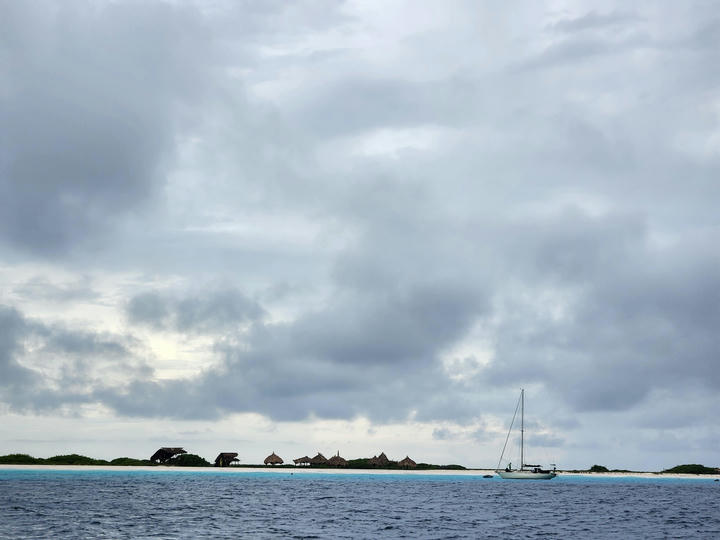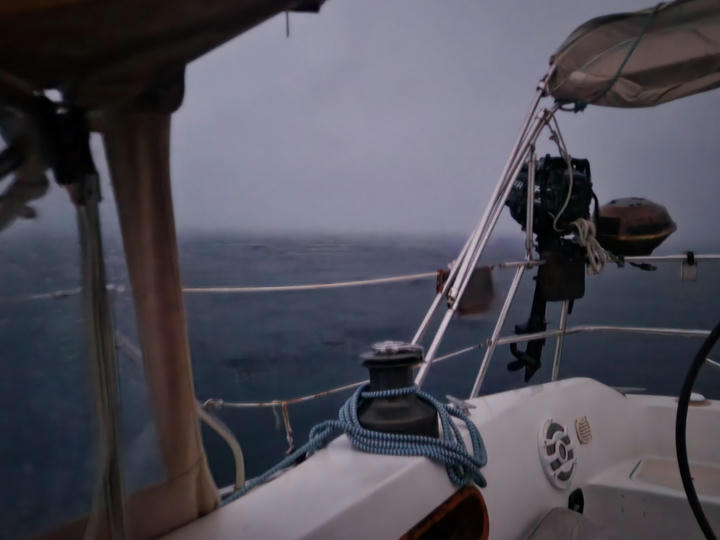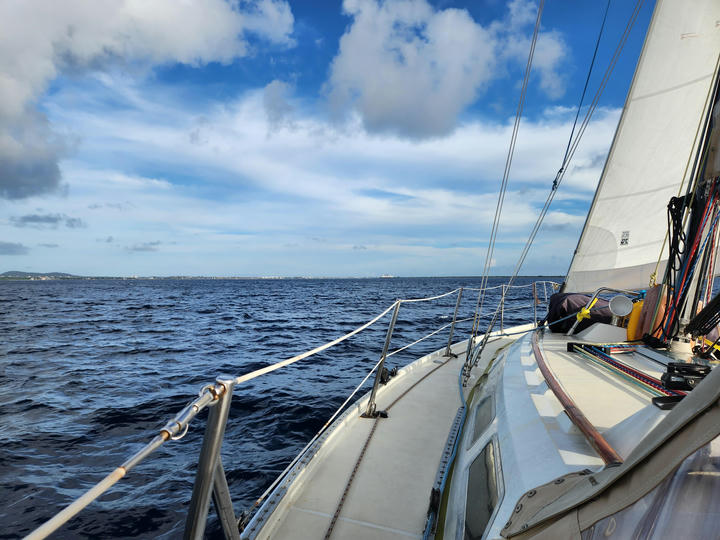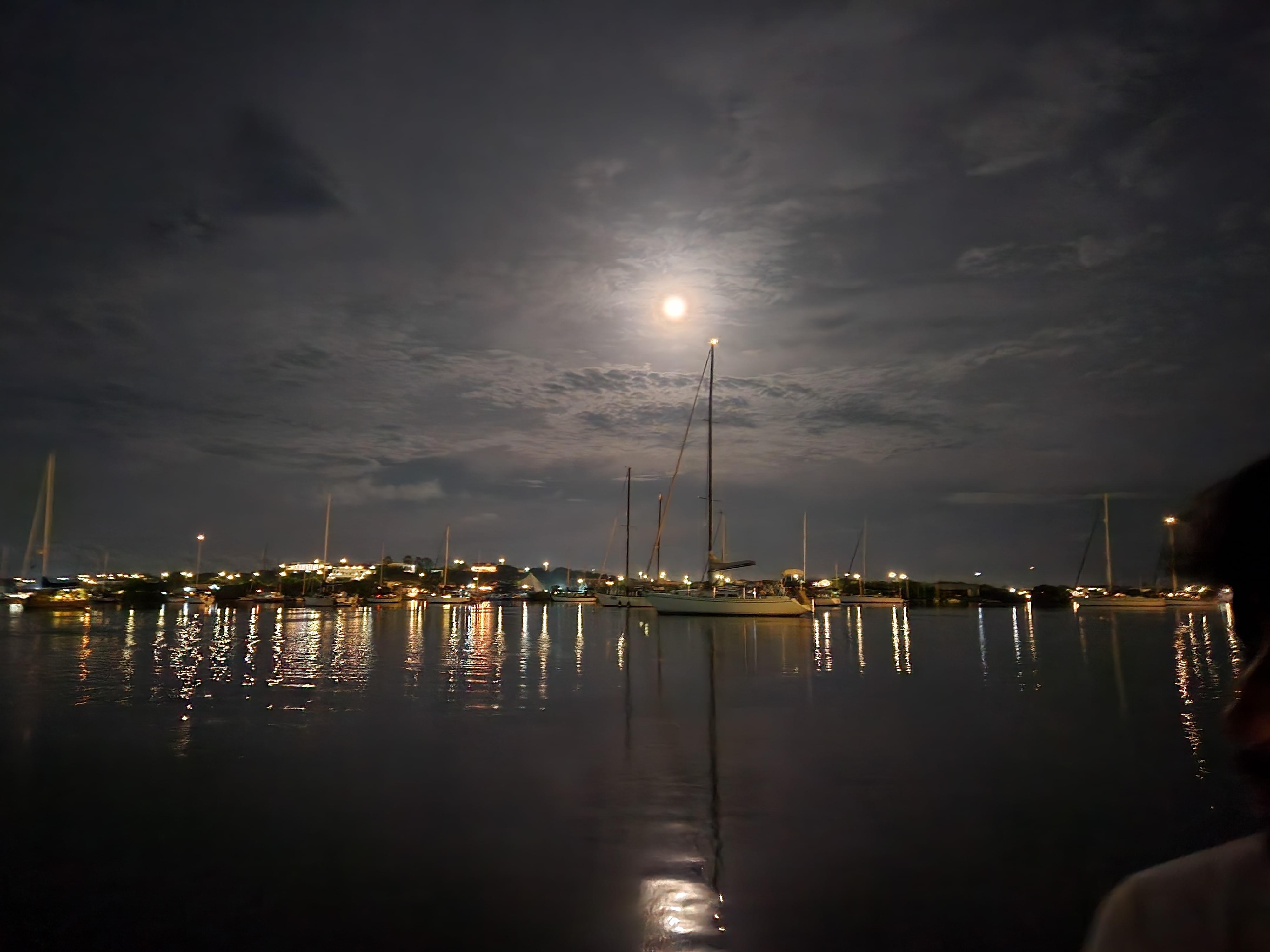We ended up spending longer than expected in Curaçao for several reasons. First, we got sucked in boat projects which, as usual, took longer than expected, and just like that, two weeks were gone... After that, we made a bunch of friends in the anchorage, which was a welcome change to our rather solitary lifestyle (sailing you more often say goodbyes than the other way around). Third, we had decided to skip Bonaire, the last one of the ABC islands, as we learned in Curaçao that it had recently become rather expensive due to a 75 dollars per person tax to be paid upon setting foot on the island. For that last reason, we waited in Curaçao for a weather window for the tricky northeast-bound passage through the Caribbean Sea. That takes time and actually ended up taking a little more time than granted by the authorities of Curaçao, and that's how we ended up in Bonaire after 3 and a half weeks in Curaçao. Whether we are happy about it or not will be a story for another time and for now, here are our impressions on Curaçao.
Willemstad
We were really seduced by Willemstad on the first day: colorful Dutch-style buildings, colors and sculptures, drawings, street art everywhere, and overall a sort of European vibe, with outdoor sitting by the bay. It's quite the opposite of Oranjestad where we found the downtown rather artificial. Willemstad is organized around a little bay closed by the pontoon bridge we couldn't cross with Tirb upon arrival, but it is a nice walkway for pedestrians. There's a little food market by the water, with historically produce arriving from Venezuela (not the case anymore from what we understood). Life is also ruled by the arrival of cruise ships to some extent, and the second bridge which is sky high is proof of that, I guess, but it seems to be less the case than in Aruba, perhaps because it is the most important port of the three sister ABC islands. We still felt the vibe of a big city in a way. There are also numerous museums that we were interested in visiting, but we only made it to the Kura Hulanda museum, which talks about the history of the region through slavery, colonialism and then modern times, definitely a must as we start our adventure in the Caribbean.
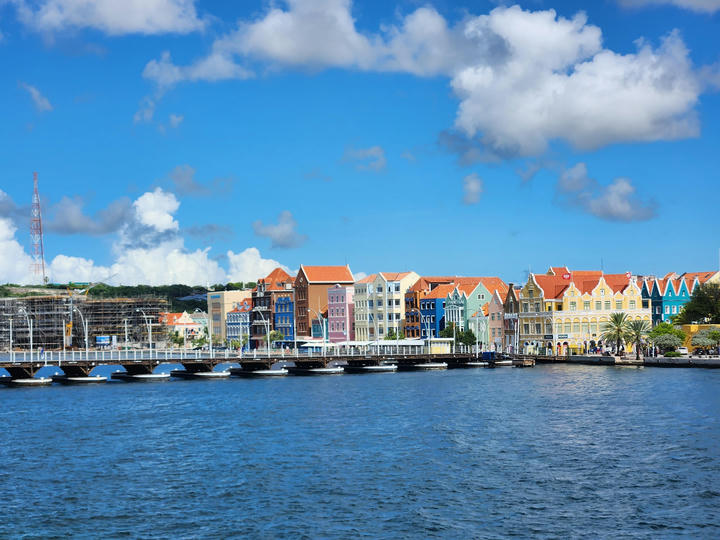
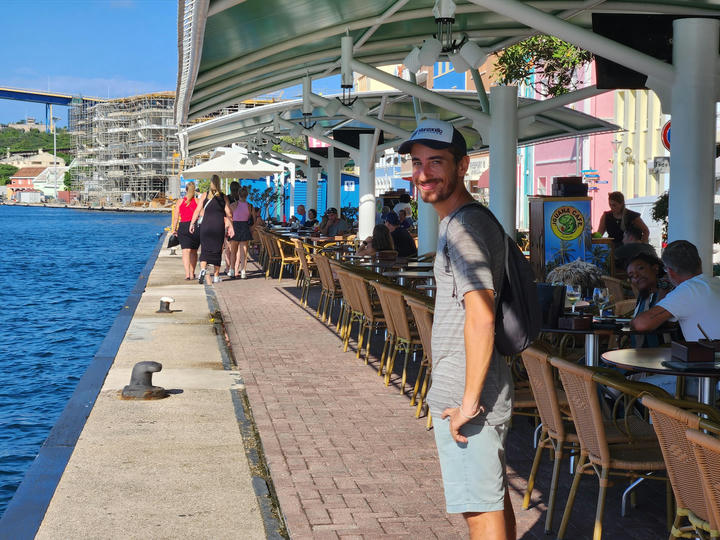
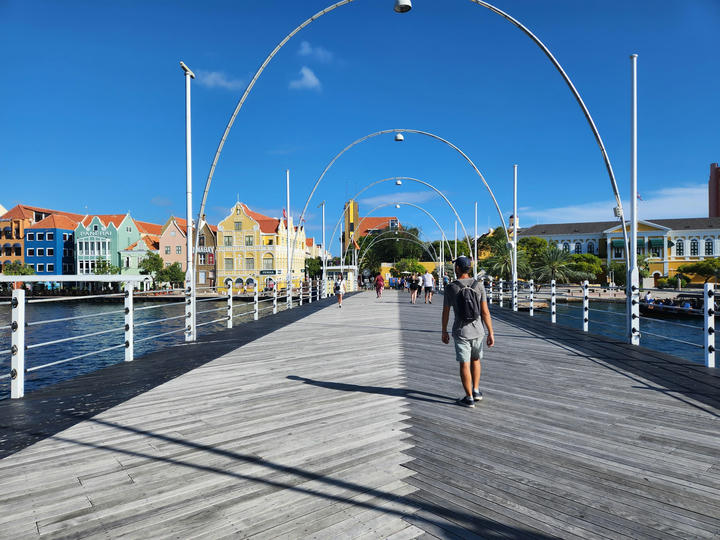
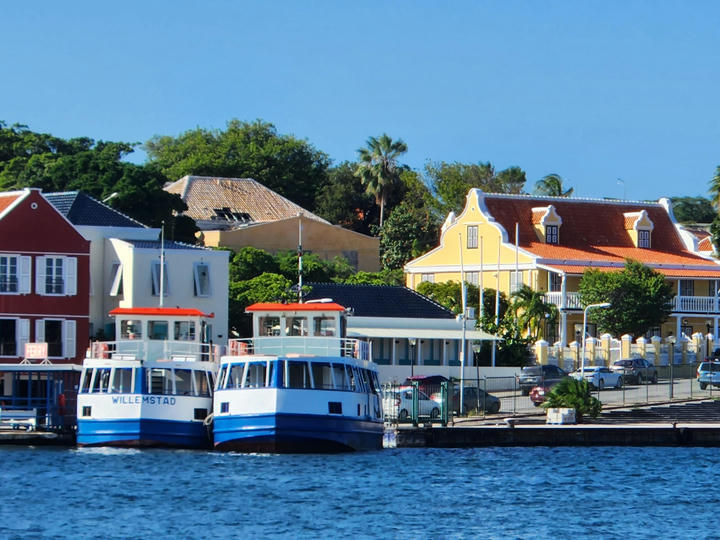
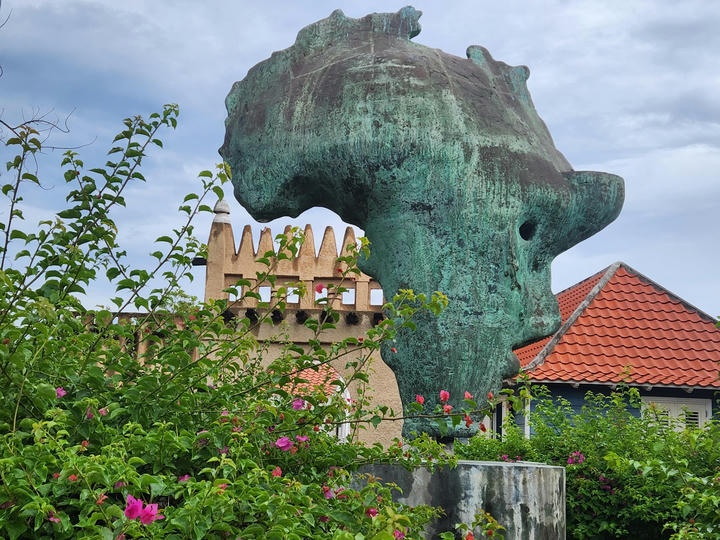

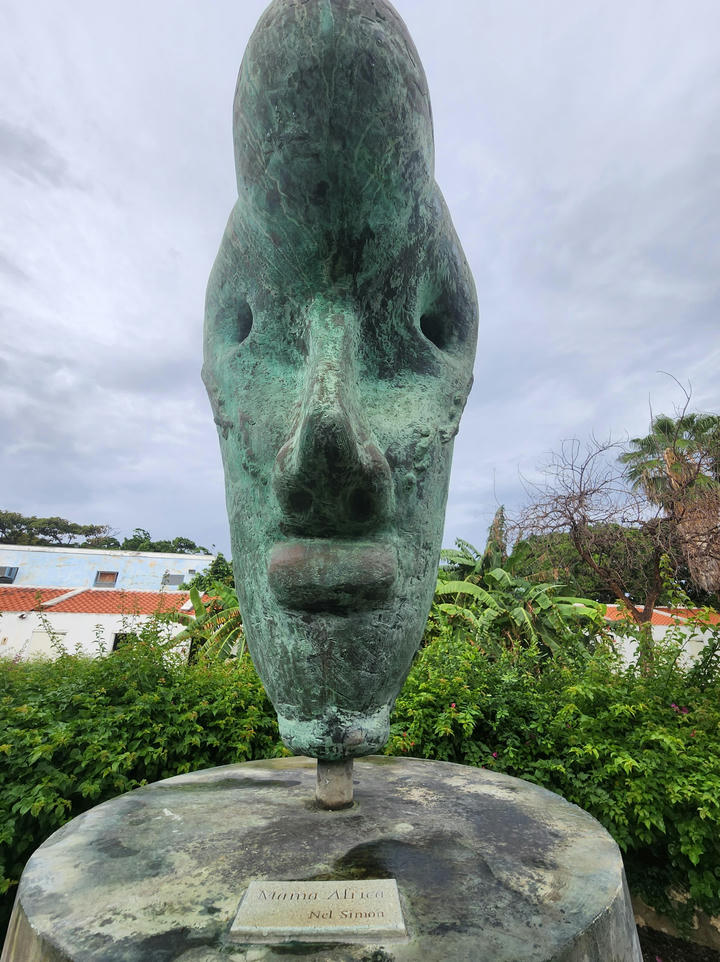
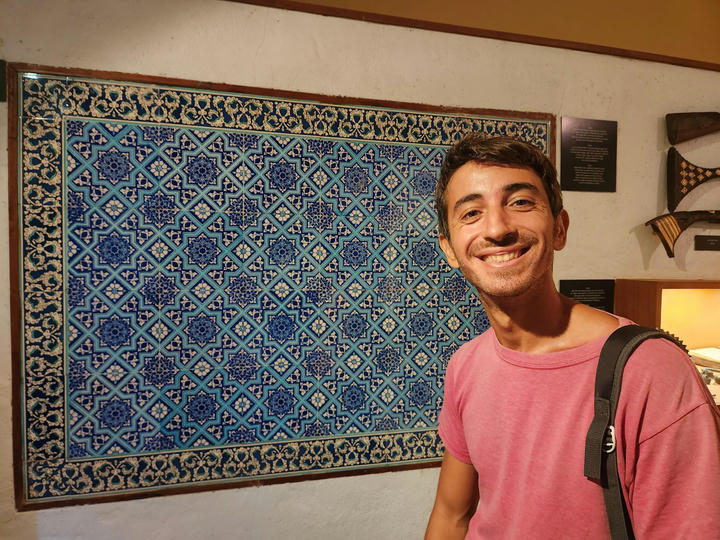
Overall, we were excited about Willemstad, but it was quite far! Indeed, we have only been able to go back a few times after our trip to immigration.
The liferaft!
We got a liferaft!! As briefly mentioned in the previous post, we got a gig with a Dutch cruiser based in Bonaire who had to change his sailing plans and kindly offered his raft for sale on Facebook when we asked for a way to buy a liferaft on the Curaçao cruisers group. We were expecting people to direct us to shops that could import the precious rafts for us - a process which we deemed was going to be long and expensive. We were therefore really thrilled when Hans told us about precisely one of the two models we had been eyeing at a reasonable price. We'd have to service it before next spring, which would be great before our tentative Atlantic crossing (🤞), and still make it slightly cheaper than a new raft. Perfect! We didn't dare believing in it before the transaction was complete but on our second day in Curaçao, Hans drove us back and forth from Spanish waters to Curaçao marine where his boat was. Our dinghy trip back to Tirb was the safest ever as Yalçın noticed, with a liferaft probably bigger than the dinghy itself once launched ^^
We were over the top with such an easy buy, but the bliss period rapidly came to an end as we realized that installing it would be quite a project! We opted to mount the bracket on the transom, which involved fixing the top to the push-pit bars, manufacturing wood pieces to match the curves of the transom to the bottom of the bracket, drilling holes in the stainless steel bracket, through-bolting it to the transom and finally fastening the raft tightly to the bracket. It took us close to two weeks. We were lucky enough to find the perfect permanent mount for the top at Budget Marine, but for the bottom, Yalçın had to manufacture wood pieces that we epoxied together, drilling stainless was a bitch and took a lot of effort. The final assembly was also difficult with all the non-parallel surfaces from the dinghy with wakes from other boats shaking the transom up and down. Yalçın sewed straps to hold the raft in place and we called the project done! We had lost our boat name in the process as the liferaft is sitting where Tire-Bouchon used to appear. Luckily, a few days before it disappeared, the other boat from Berkeley in the anchorage noticed our port of call on the transom and we made a bunch of friends who were also going to the Northeast Caribbean.
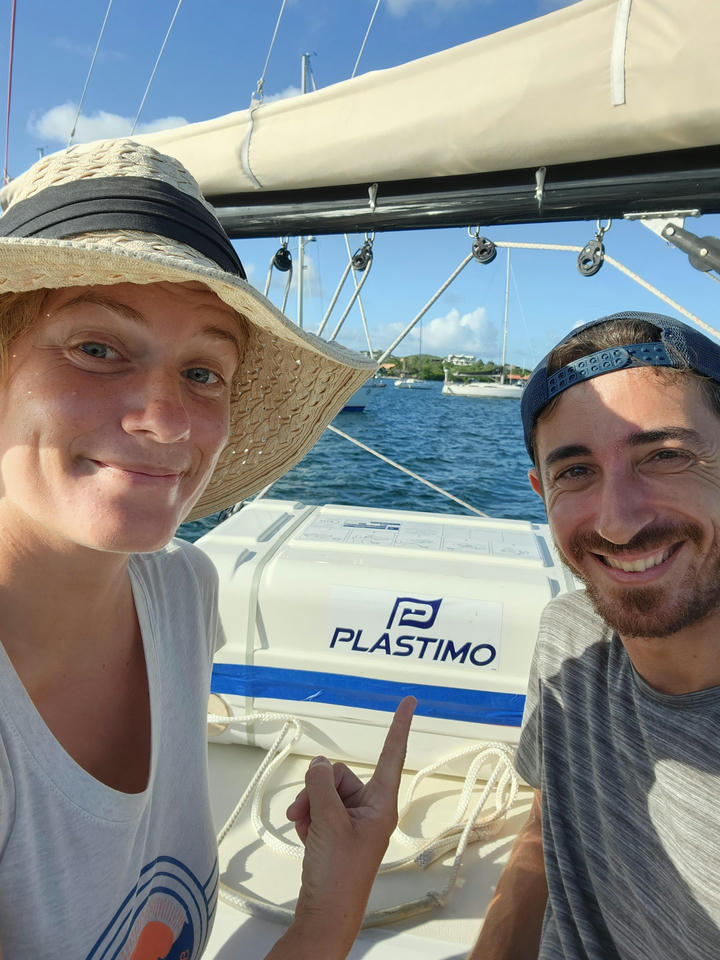
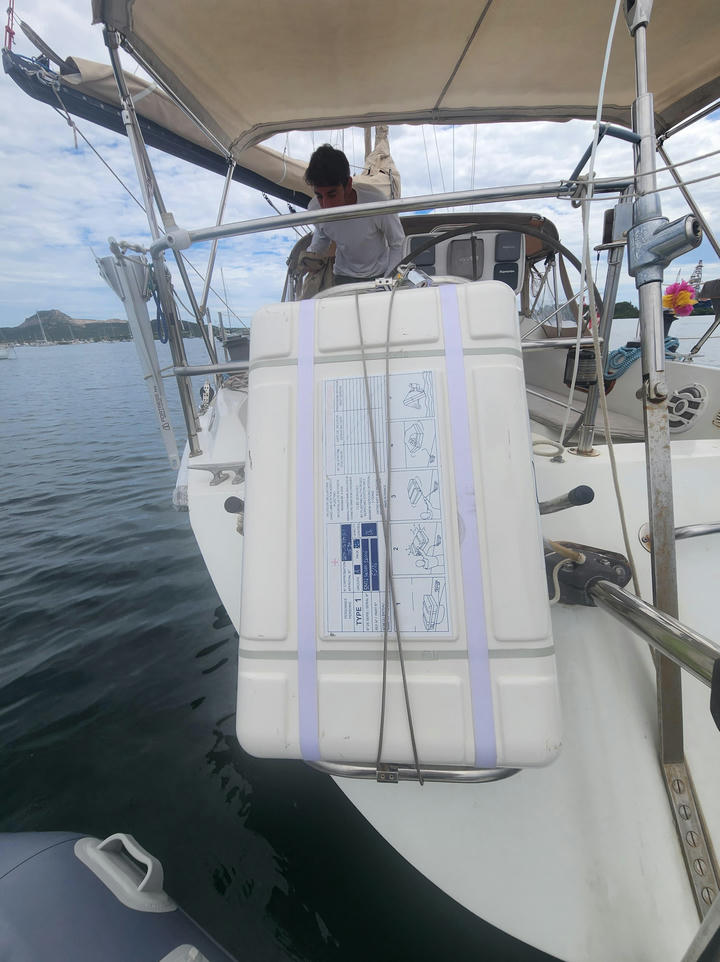
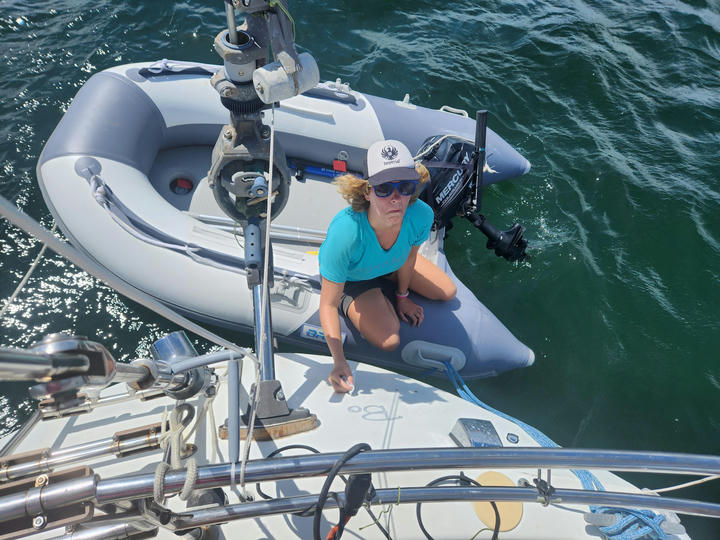
Other boat projects...
Of course, as if one project wasn't enough, we took advantage of the time and flat waters of the Spanish water anchorage to fix our leaking salt water pump in the galley, change one of the hank-on staysails that came with the boat (without the stay) to fit on the furler as a storm jib, restitched many parts of our main sail that needed attention, and finally, reroute our SSB antenna and tested it thanks to the Escapee net and Mike, an SSB knowledgeable enthusiast who helped many boats in the anchorage get their radio in working orders.
Because the boat was out of order for those two weeks, we didn't get the chance to wonder whether we should go on the first weather window that came our way. We saw several boats leave for Sint Marteen or Puerto Rico. It motivated us to be ready with the projects in order not to miss the next window and also made us realize for the first time, that there were many people doing this trip year after year. We weren't that crazy after all!! However, November was the season, at the end of the hurricane season and before the onset of reinforced tradewinds, called Christmas winds, so we didn't have much time.
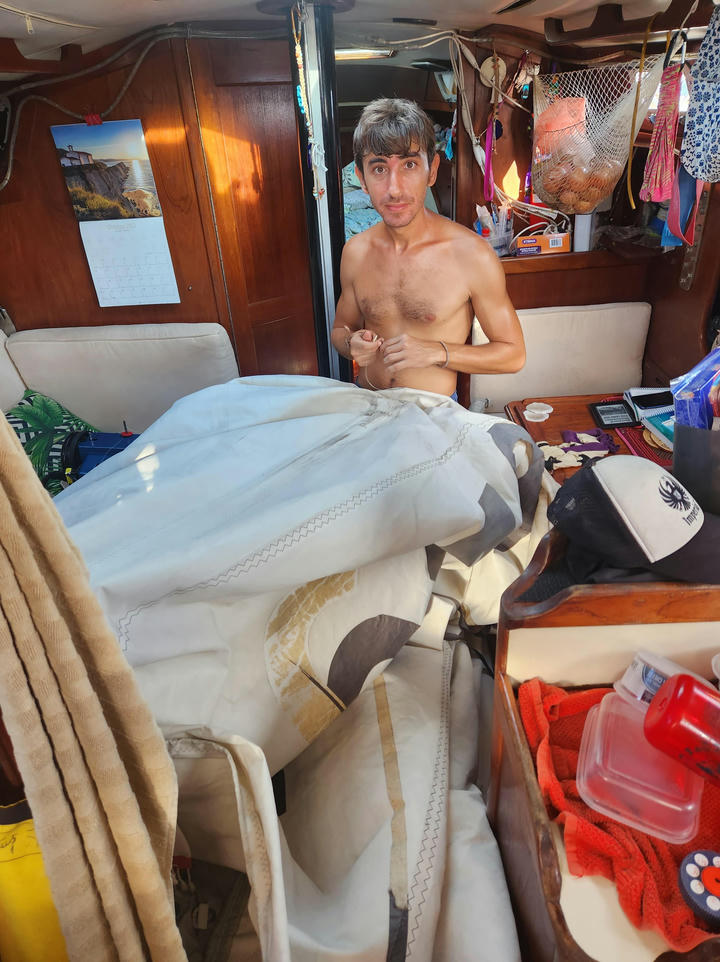
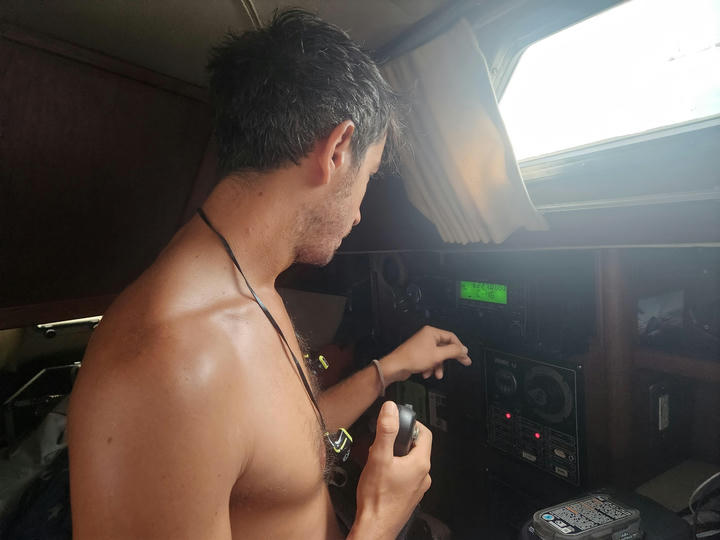
The Curaçao distillery
Besides the Kura Hulanda museum and on a totally different note, one thing we wanted to do in Curaçao was to visit the distillery of the well-known Curaçao liquor! I remember it as blue from college parties, but we discovered it exists in 5 different colors, as it is naturally transparent and the color really just comes from food coloring. Yet, we kept it to the same theme of industrial tourism which, we have found, suits really well our land interests which are shared between looking for boat parts and learning how things are made, like coffee, chocolate or more recently fresh water in Aruba...
The distillery tour was overall disappointing, as very little of the process happens on site. The only Curaçao-specific thing is the oranges. The species was imported from Spain and only gave very bitter fruits in Curaçao, which prompted the invention of the liquor. On the other side of the island, the oranges and peels are still harvested by hand, then twice a year, they are infused in pure alcohol at high temperature and pressure with a mix of spices and... that's it! The alcohol comes from South Africa, the bottles are shipped from Spain and the only thing taking place in the "distillery" beside the infusion is the labeling of bottles, which is done by hand. The tour emphasized on distinguishing themselves from the competition, which sells "Christmas tree like bottles" and is not the original company from Curaçao.
The tasting part and cocktail at the end of the tour in a little patio still justified the price and the long walk from the bus stop. Yet, we weren't as impressed as we'd wanted and ended up buying our souvenir bottles from the supermarket where they sold for cheaper.
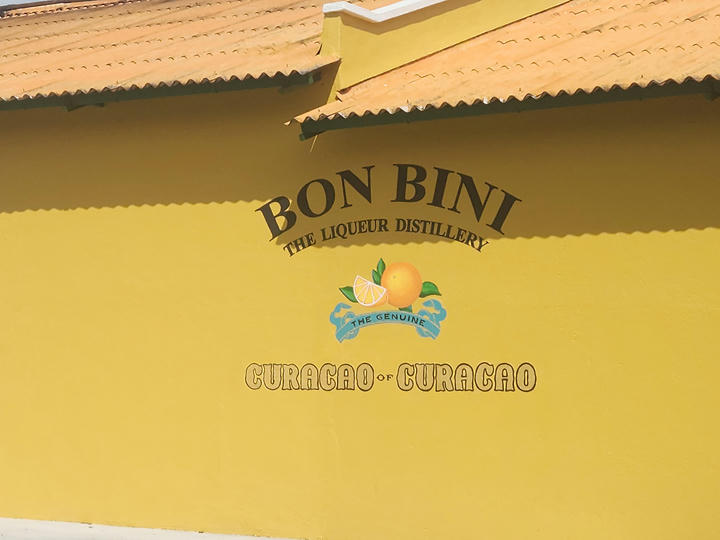
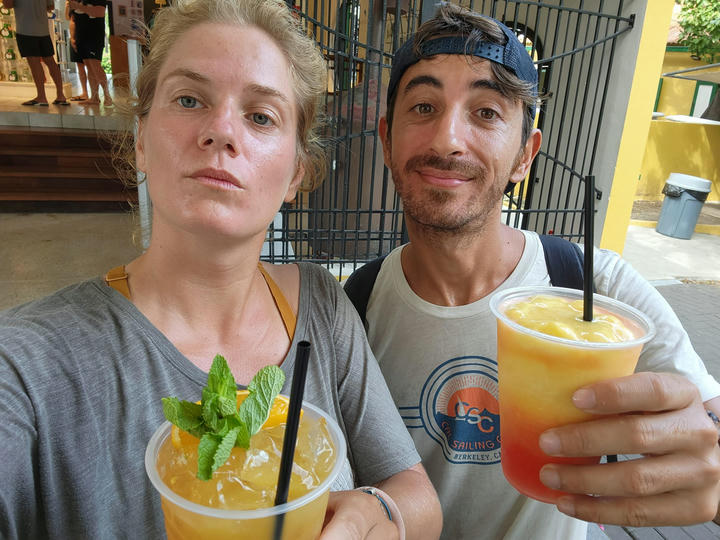
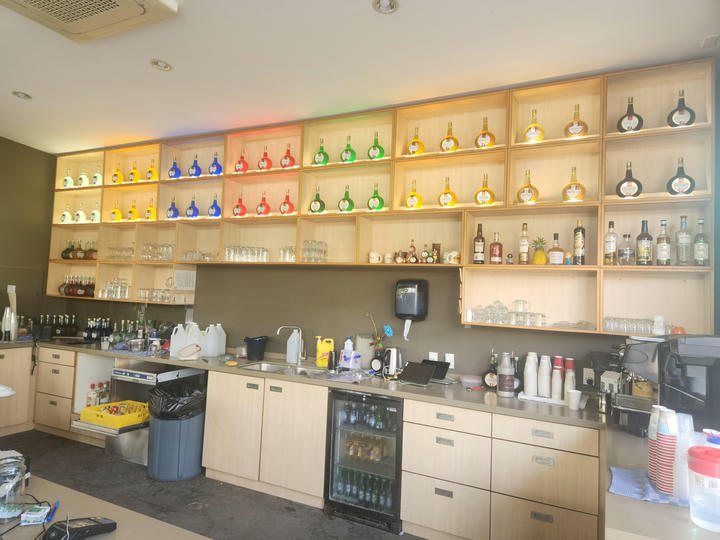
Spanish waters
Spanish waters stroke us by the number of boats at anchor there. We knew it was a popular spot to wait out the hurricane season, but yet, the amount of boats was unexpected. Such places always fascinate me as it feels that living on a boat is something extremely common. The anchorage has a narrow inlet that leads to a few sheltered bays surrounded by houses, docks and restaurants. It isn't uncommon to see dinghies or jet skis zigzagging in between the anchored cruising boats. After a few trials, we anchored in zone A, quite close to the dinghy dock and loved our spot throughout our time here.
Except for a first encounter as we took the bus to check in, we mostly kept to ourselves during the boat project part of our stay. We tried to join a cruiser dinner organized by a neighboring restaurant, only to learn we had to book the dinner in advance and we could make it "maybe next week".
What got us started in the 'social business' was to arrange a first meeting with the Poppycock crew. Who is the Poppycock crew you may ask? Well, we didn't really know who they were either at the time, but we had been in touch with one of them since Panama. Back then, one of them had posted a message looking for information from other yachts who had made the passage from Panama to the Caribbean, through Colombia and the ABC islands. We didn't have much to bring to the table, but since we were in the same boat so to speak, I had introduced ourselves and offered to keep in touch. Since then, we had followed Poppycock, a few weeks after them every time and had finally caught up in Curaçao. So we decided to meet in person, to share stories and finally put a face on a WhatsApp conversation. The person I had been talking to confessed he had no idea how many people would show up when he invited us on board. We were a bit better informed, we knew it was a couple and kinda remembered something about a baby, but we had no idea of where they were coming from nor where they were going after. We ended up getting along very well with Nathaniel, Nina and their 5-month-old Ahio. We hung out a few times and shared plenty of sailing, live and political stories. They were also deep into boat work and it felt good to be understood in our struggles and share someone else's.
A few days later, a dinghy stopped by, they had seen Berkeley on our hull shortly before it disappeared and came to inquire what our story was. On this dinghy, the crew of SV Fin and SV Prism. The latter also coming all the way from Berkeley. We actually knew their story as we had followed their YouTube episodes with a lot of attention as we went down the coast of Pacific Mexico. We ended up becoming good friends and sharing the burden of selecting this weather window, with them as well as our anchor neighbors, a couple of Dutch people on a beautiful ketch. They were all bound for Puerto Rico though and all stayed for 6 months in total in Curaçao. That made us realize our time was coming to an end sooner (we had only one month) and we needed to take the first weather window showing up in the forecast to go the BVI (I, Marie was not allowed to Puerto Rico, nor the USVI, making for a longer trip). We ended up preparing for the "Thursday" weather window which we had declined earlier and our friends hesitated about. We had no choice. We made it a little less rush by deciding on a Friday departure. We checked out on Thursday, and the weather started to look less and less good towards the end of our trip - if only we could have sailed to Puerto Rico like the others.
That night as we were nerding on the weather routing, SV Fin paid us a goodbye beer at the cruiser's happy hour and tried to convince us to go to Bonaire and wait for the next weather window to take off with them. We were hesitant: we had decided against Bonaire by principle as they had raised their immigration fee beyond what's reasonable for a cruiser. As planned, we had the whole Northbound crew over for Turkish dolmas (stuffed peppers). It was a fun night and leaving was going to get harder as friendship was being built. After they left with good wishes for our trip, Yalçın and I sat and studied the forecast again. There was no way. The window was closing too soon. Christina from Fin had made me doubt a possible tropical depression bringing South wind for the following week, calling for a downwind passage or even a direct route to our ultimate goal in the Caribbean, Saint Lucia where Yalçın could apply for a visa for the French islands. The South wind never came but we had made our choice, the Caribbean Sea crossing would wait, we were going to Bonaire.
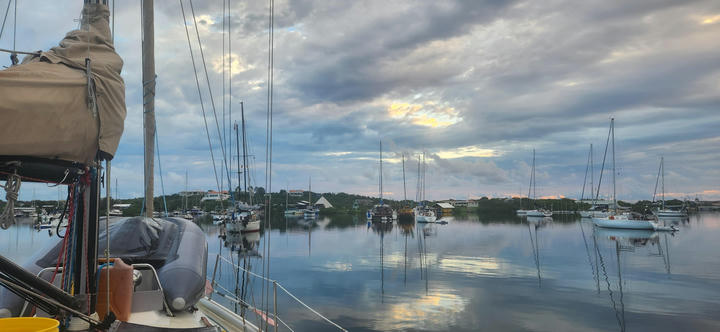
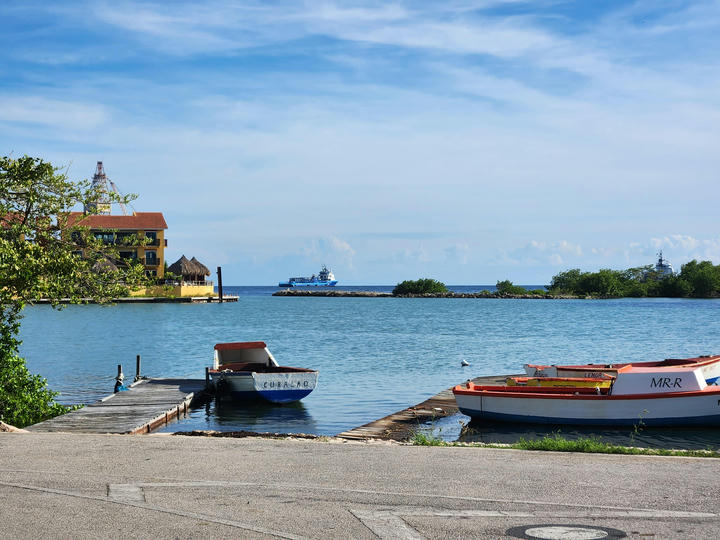
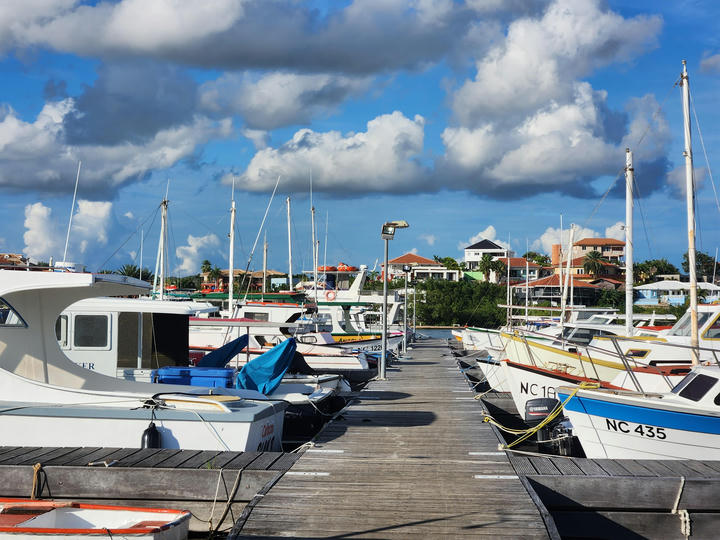
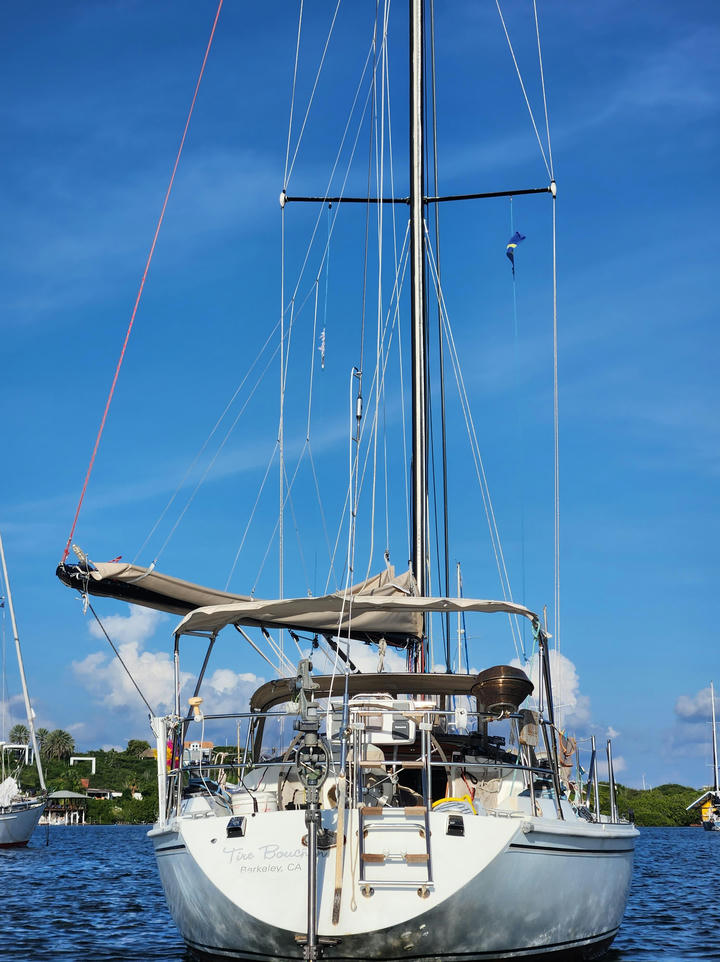
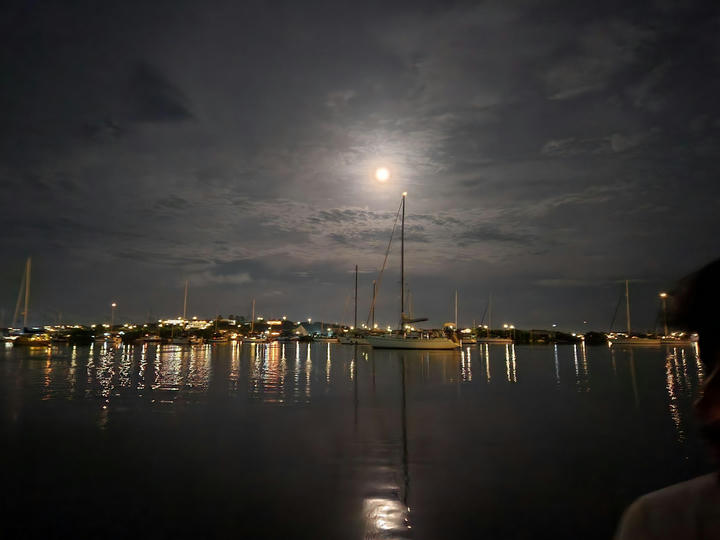
We left the next day at noon after another round of goodbyes, stopped at Klein Curaçao for the night - a little island South of Curaçao renowned for great snorkeling but which turned out quite stormy and not suitable for dipping in - and had a blissful beat up in flat seas the next day. We arrived at the mooring field just in time to dive the mooring Hans had reserved for us before sunset. The turquoise color of the water waved of any regrets we might have had, and we'd see later for that tax!!
